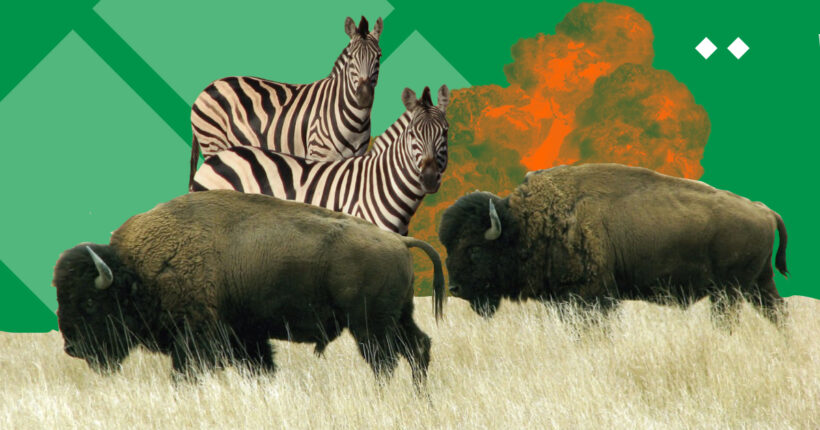
What is the problem?
The territory of Ukraine's unique biosphere reserve in the south of the Kherson region has been under occupation for more than a year. Askania-Nova is one of the world's oldest nature reserves, specializing in the preservation and reproduction of steppe ecosystems.
On the territory of Askania, in the virgin steppe and arboretum, more than 1,500 species of plants grow, many of which are rare and endemic. In the zoo, one can meet various ungulates: saigas, kulans, zebras, antelopes, Przewalski's horse, and many others. The reserve was founded in 1874–1898 by the German baron Eduard von Falz-Fein, a famous naturalist and philanthropist who protected and studied these lands' steppe flora and fauna. Thanks to his work and the efforts of scientists and like-minded people, Askania-Nova has become a unique example of preserving the natural environment and biodiversity.
The territory of Ukraine's unique biosphere reserve in the south of the Kherson region has been under occupation for more than a year. Askania-Nova is one of the world's oldest nature reserves, specializing in the preservation and reproduction of steppe ecosystems.
On the territory of Askania, in the virgin steppe and arboretum, more than 1,500 species of plants grow, many of which are rare and endemic. In the zoo, one can meet various ungulates: saigas, kulans, zebras, antelopes, Przewalski's horse, and many others. The reserve was founded in 1874–1898 by the German baron Eduard von Falz-Fein, a famous naturalist and philanthropist who protected and studied these lands' steppe flora and fauna. Thanks to his work and the efforts of scientists and like-minded people, Askania-Nova has become a unique example of preserving the natural environment and biodiversity.
The situation has been and remains critical for the reserve since February 24, 2022, when Askania-Nova came under occupation, from nine o'clock on the first day of a full-scale war, says Viktor Shapoval, the director of the Askania-Nova Biosphere Reserve.
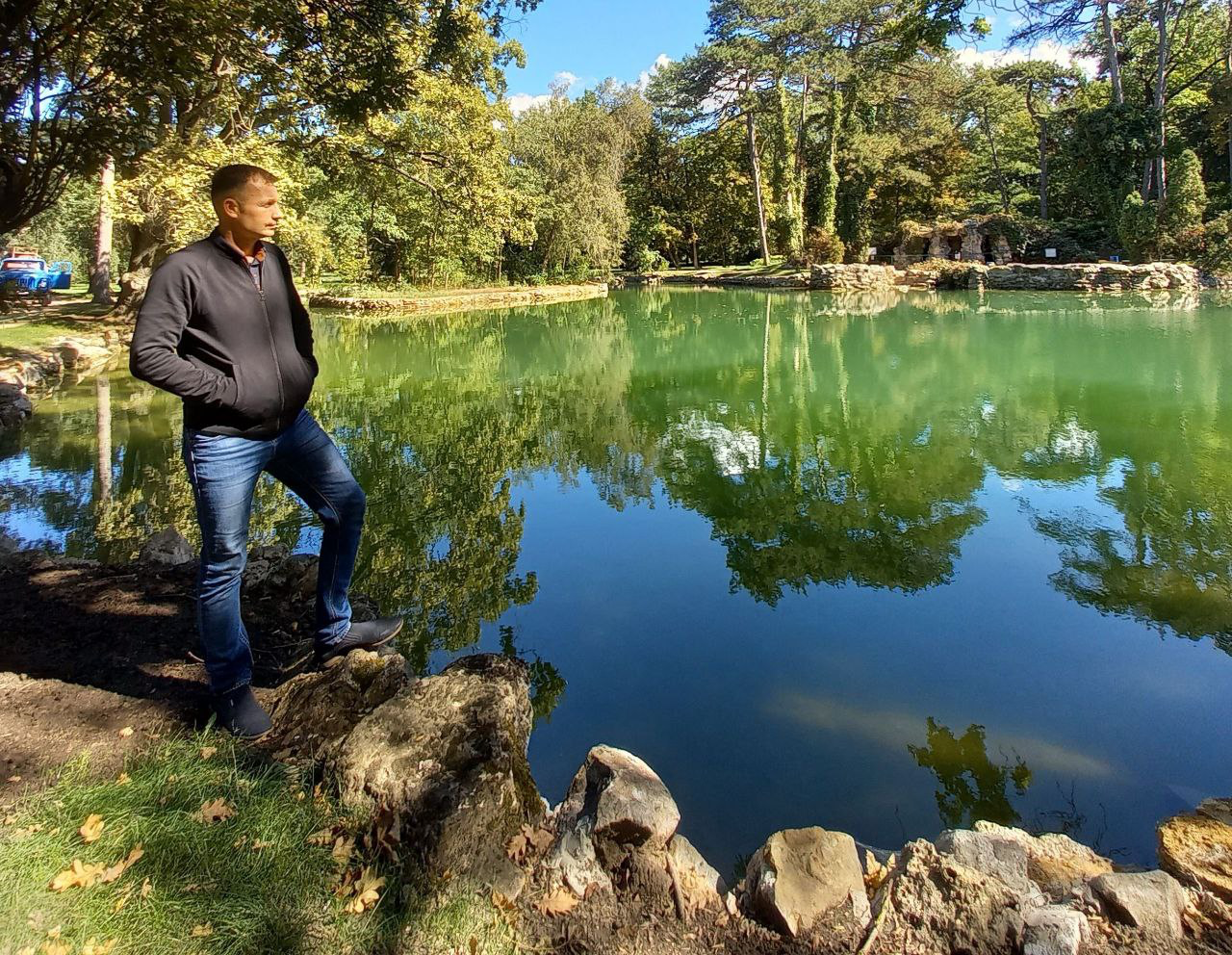
Photo by Viktor Shapoval near the pond in Askania-Nova, taken before leaving for Ukraine-controlled territory in September 2022
Despite the occupation, the reserve managed to function as a Ukrainian institution for 13 months. The leadership did not make agreements with the Russians, and the protected steppe, the zoo's animal collections, and the arboretum were preserved. The team even had time to clean the pond in the central exhibition area of the dendrological park, which took place for the first time since 1979. On March 20, the occupation authorities appointed their own administration and established de facto control over the institution.
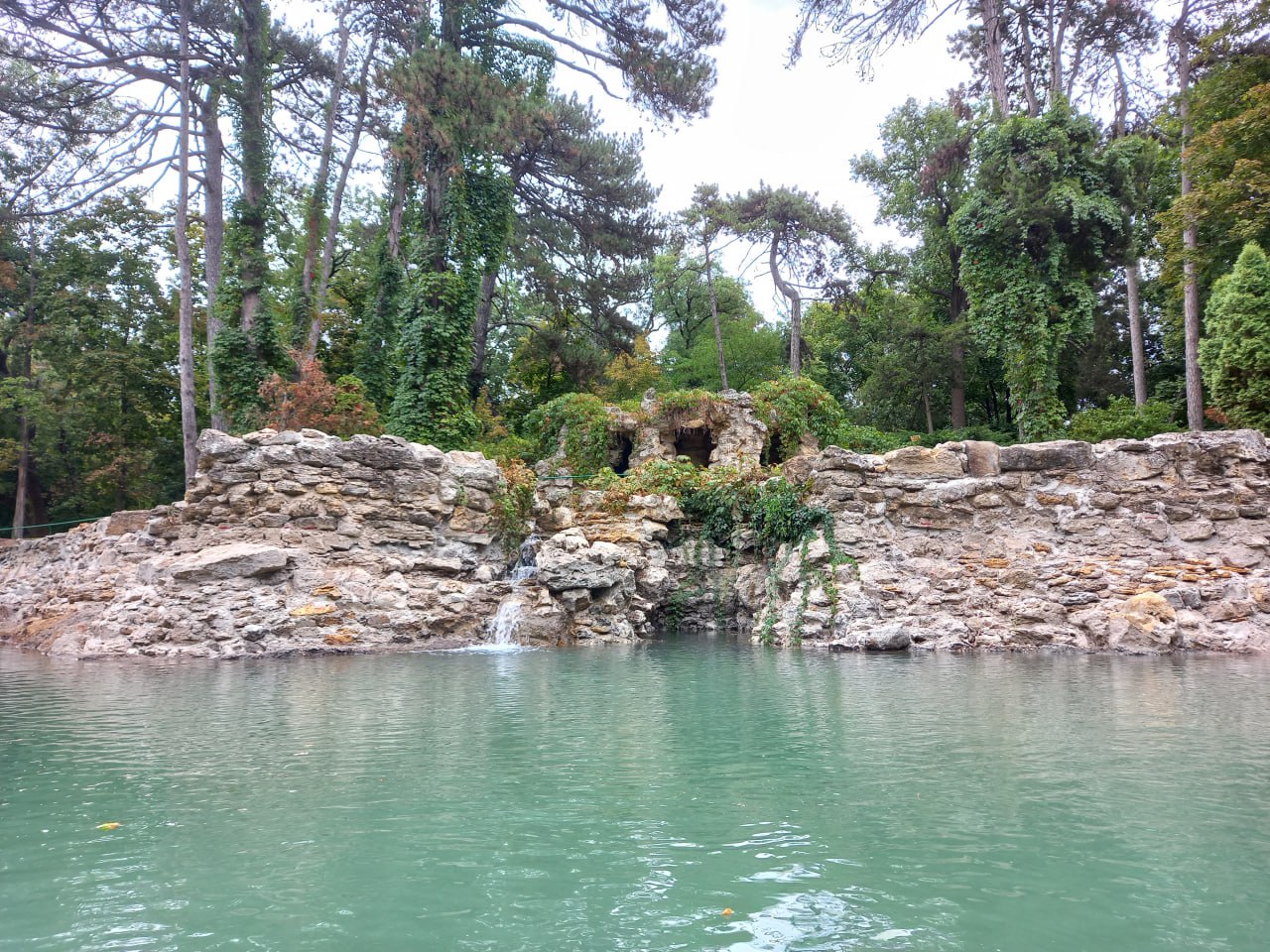
Photo: Viktor Shapoval's archive. The Askania-Nova's arboretum, where more than 1,500 species of rare and endemic plants grow
Rubryka looked into how Askania-Nova existed all year, what threats have appeared now, and what will be done after de-occupation.
What is the solution?
Askania-Nova and the war
Askania-Nova has been in the deep rear of the enemy from the very beginning. The battle line runs roughly along the Dnipro line, where battles were fought near Nova Kakhovka and Shylova Balka at the beginning of the invasion. There was no shelling on the territory of Askania until October, when the local hospital and the territory of the Askania-Genetic farm were shelled, says the director of the reserve.
Shapoval says there were flights nearby, and Askania-Nova employees constantly heard something, but it was outside the community's territory. The sounds of enemy aircraft flying are considered more dangerous. This is a huge stress factor for animals. Aviation and aircraft flights over the protected zone are prohibited, but since the beginning of the war and until now, aviation has been very active, creating significant problems.
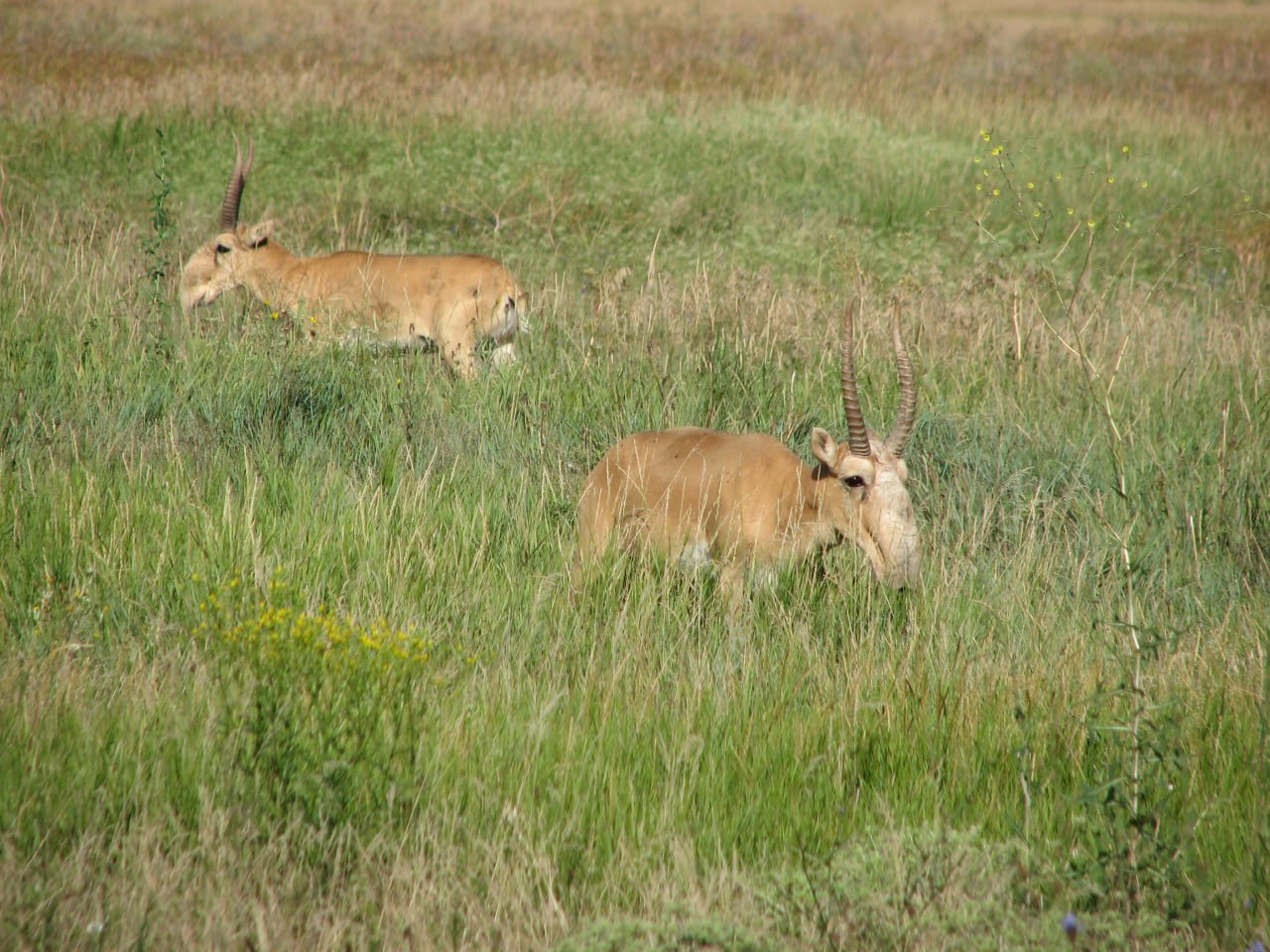
Photo: Viktor Shapoval's archive.
Since October, military equipment, armed formations, and personnel have been stationed on the reserve's territory.
"This is a huge risk. Military equipment is stationed on the reserve's territory, and the personnel is based within the settlement of Askania-Nova," Shapoval continues. "The occupiers disperse as much as possible, take cover with the civilian population, settle in apartment buildings, that is, under cover of civilians. The situation here is no different from other occupied settlements in the region."
Reserve under occupation was able to exist in the Ukrainian format for almost a year
Despite the fact that the reserve has been under occupation from the very beginning, the institution has managed to exist for almost a year in a Ukrainian format, with Ukrainian management, and make purchases from Ukrainian companies.
"Judging by the reaction on social networks to the last post, where we reported that the occupation authorities had appointed their administration, many people were surprised that the institution existed for a year in an autonomous mode, but in a completely Ukrainian format," says Shapoval.
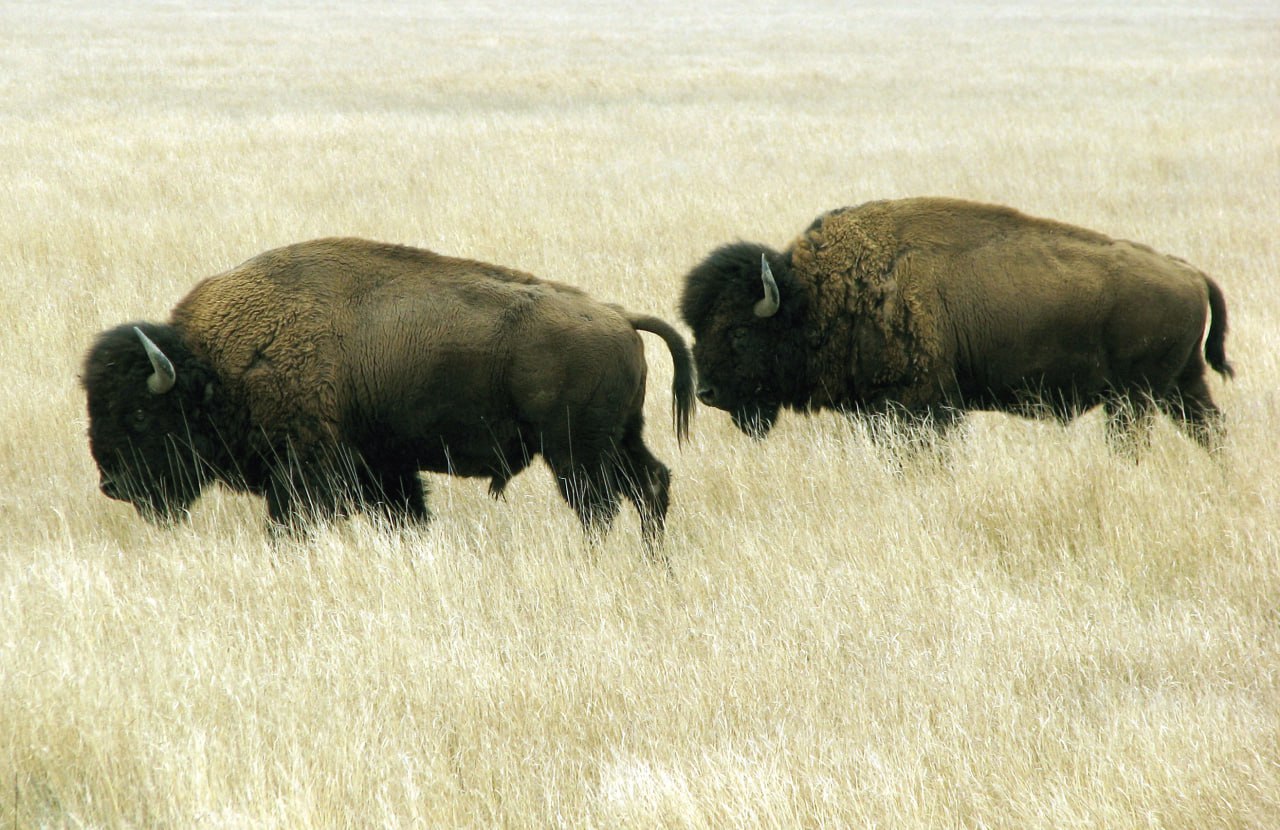
Photo: Viktor Shapoval's archive.
Conservationists and volunteers helped preserve the natural heritage
Now about 140 people remain in the institution. Most of them are technical personnel, and there is no other choice.
It was impossible to evacuate people and leave the reserve unattended in the occupation because Askania-Nova consists not only of natural ecosystems with a certain natural strength and self-regulation mechanisms but also artificial collections of plants and animals.
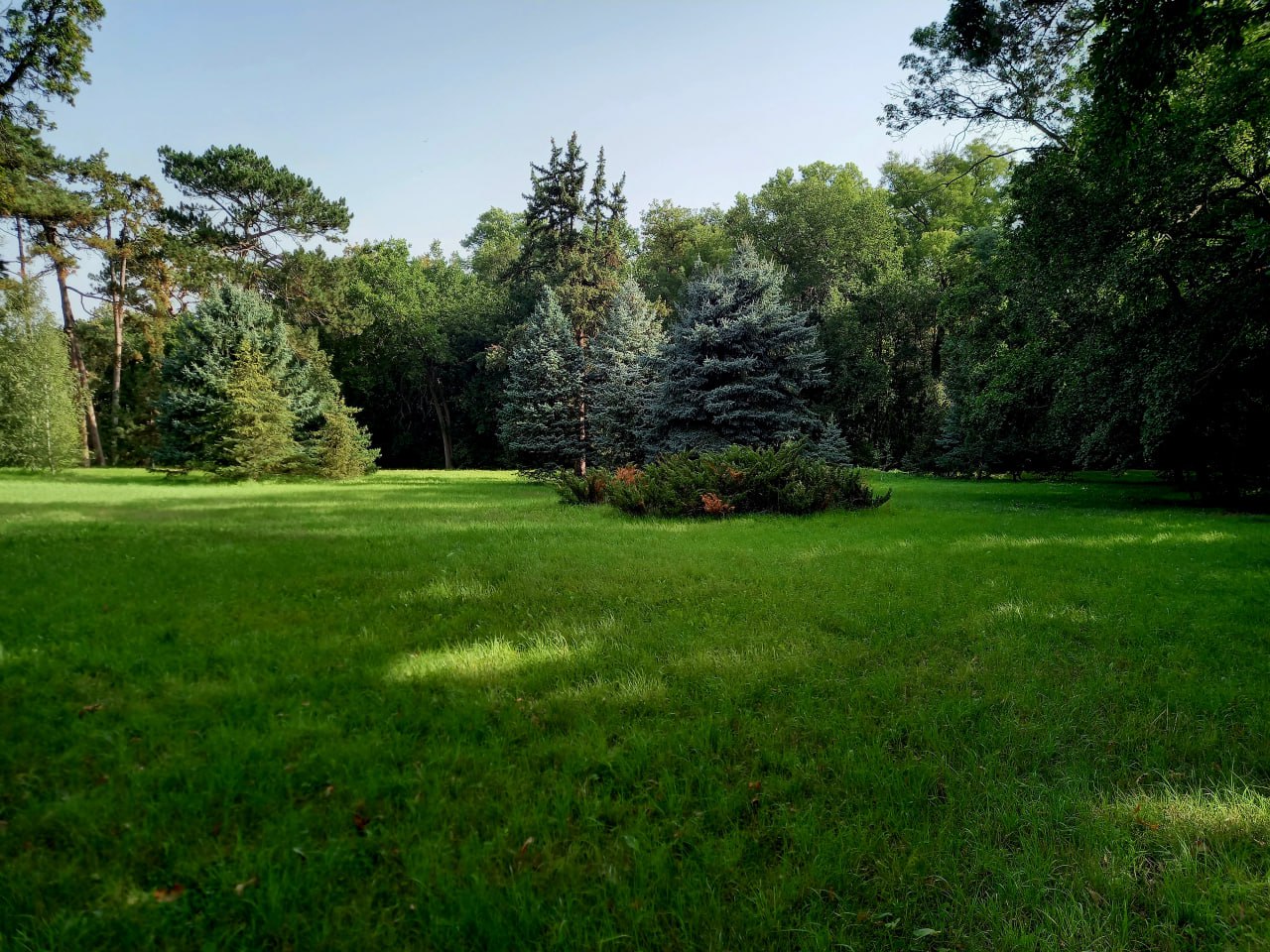
Photo: Viktor Shapoval's archive.
An arboretum in a dry steppe needs regular irrigation, artificial ponds need to be cleaned from time to time, hay is prepared for the animals in summer and autumn, they are fed daily, and for the winter, they are driven into winter quarters, the repair of which must also be taken care of in advance:
"The situation was dramatic. We are not a library, and we cannot simply close for an indefinite period. Either this collection will die, or there must be people who will take care of animals and plants," Shapoval explained to Rubryka. "This cannot be considered collaborationism — many people remained in the reserve due to forced circumstances and are hostages of the situation."
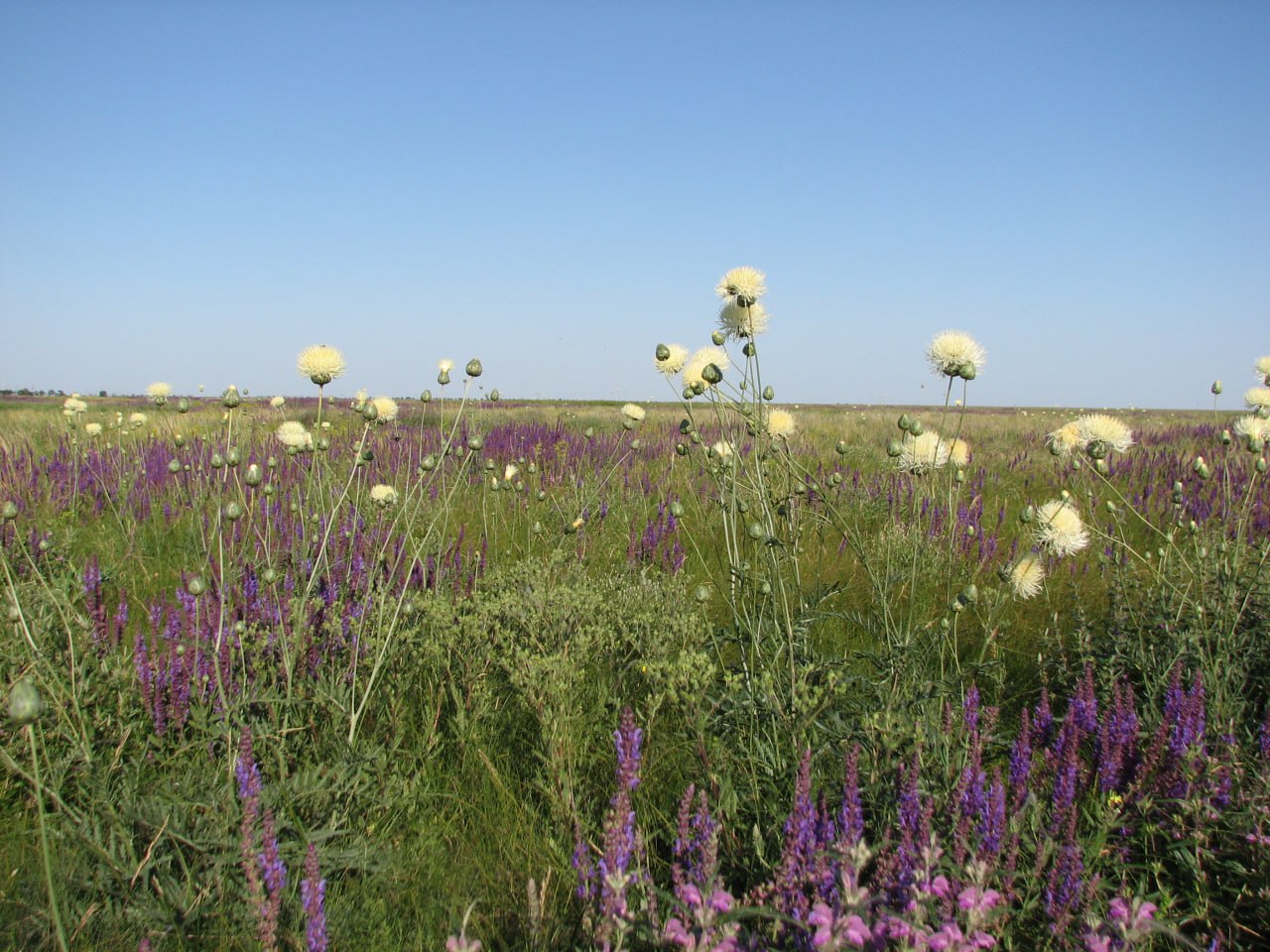
Photo: Viktor Shapoval's archive.
Before the appointment of the occupation administration, the employees managed to pay their salaries up to and including March 2023, but it was impossible to allocate budget allotments for current expenses. Due to bureaucratic issues, they could not use charitable assistance from the reserve's official account. Buying fodder, veterinary drugs, fuel, spare parts for machinery, and building materials for repairs was necessary. But how to do this when the institution cannot make any purchases?
"You had to orientate yourself very quickly, there were no instructions, mechanisms, or algorithms, and there probably couldn't have been. Everyone's situation in the occupation was unique, and in many respects, we acted intuitively," the director continued. "An NGO, Ukrainian Nature Conservation Group (UNCG), led by biologist and ecologist Oleksiy Vasylyuk, came to the rescue and played the role of a mediator. It accumulated all charitable aid in its account and paid directly to suppliers.
What were the occupiers doing at that time?
"That's how we survived for more than a year, month after month. All this was strange, even for us, because the situation looked very critical. Everything could have ended much earlier — talks and inclinations to cooperate on the part of the occupiers continued until the middle of 2022," Shapoval recalls. "The last such meetings did not go well, they ended with threats, but somehow no one particularly pressured me and did not interfere in the institution's work. Undoubtedly, they were monitoring the situation, probably waiting for us to break down, waiting for appeals for help from our side, but this did not happen. We held on until the end."
In the summer, a hay harvesting campaign was held in the reserve, and a sufficient resource of high-quality hay was accumulated. Then the animals survived the winter. Now, in the spring, some of them are already coming out of the winter quarters and being released into the pens of the Chapelskyi pid — a unique relief depression measuring four by six km, which is periodically filled with meltwater.
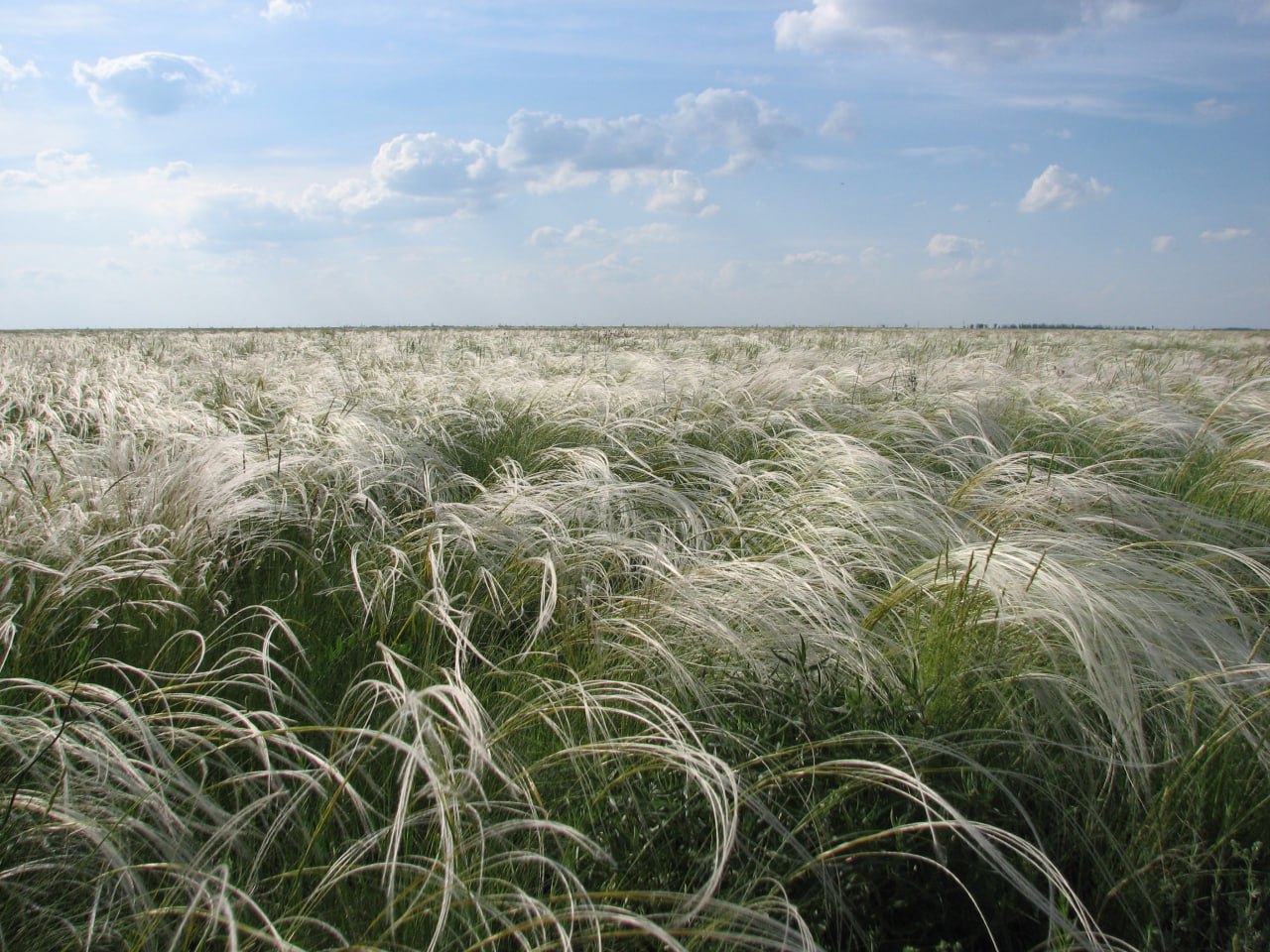
Photo: Viktor Shapoval's archive.
With the appointment of russian administration, an immediate threat to the zoo collection of the reserve appeared
One of the possible reasons for the appointment of the occupation administration is the alleged cleaning up of the institution's property. Shapoval notes that although the zoo collection is not the greatest value of Askania, it has a direct, material dimension. The animal can be sold, and each of them has its own value. Before the start of the full-scale war, Askania-Nova sold ungulates to zoos and nature conservation organizations.
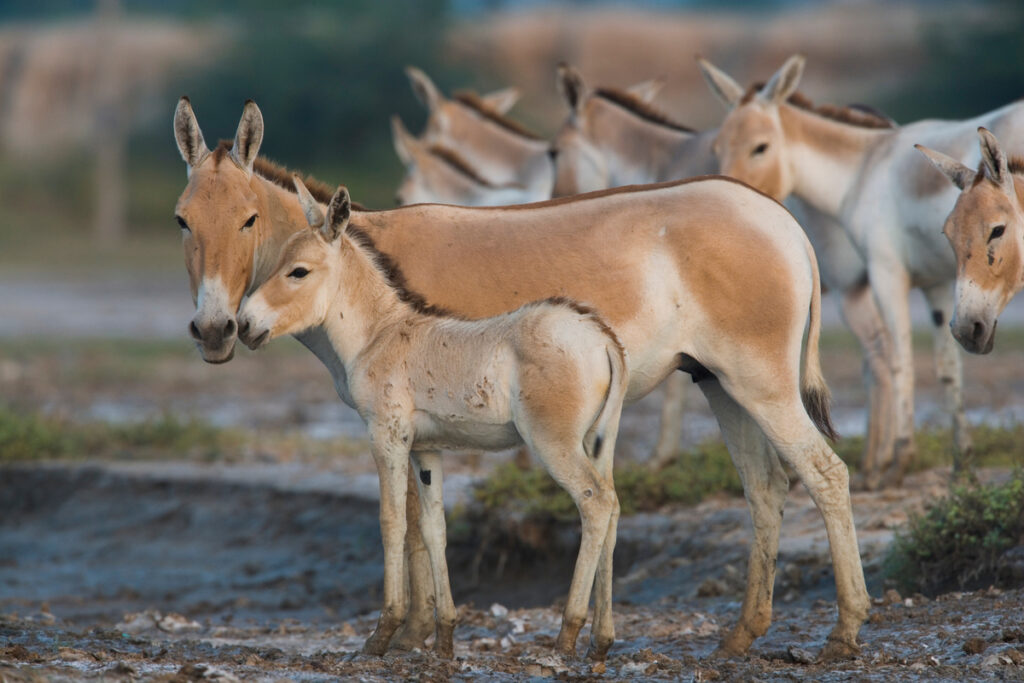
The photo of kulans is illustrative. Photo: Suspilne
One of the latest examples is the restoration of the population of an aboriginal species of kulans in the Tarutyn Steppe in Odesa. In 2021, the animals were moved from Askania to a new environment, and in 2022, the first cub appeared in the free. The unique experiment ended successfully.
An animal that has value will, of course, be of interest and value to the occupiers. In one of the interviews, Serhiy Danylov, an analyst at the Center for Middle Eastern Studies, says that the appointment of the occupation administration is connected precisely with the intentions and preparation of the occupiers for the removal of the zoological collection.
"You don't need to be an expert or an analyst here to understand these risks. This is the logic of the occupiers' actions: everything is stolen, and what cannot be taken away is destroyed," Shapoval sadly concludes.
Will it be possible to restore the Askania-Nova animal collection?
It will be either extremely difficult or downright impossible to restore the collection because a special gene pool of these animals has already formed during the huge period when the animal population exists in the semi-free conditions of Askania. They are acclimatized, there is a certain role of inbreeding (crossing between "relatives" among animals, — ed.), and unique genetic lines exist. The very experience of introduction and reintroduction (restoration of a population that was previously removed from its natural environment or disappeared due to environmental degradation or climate change, — ed.) in Askania is unique.
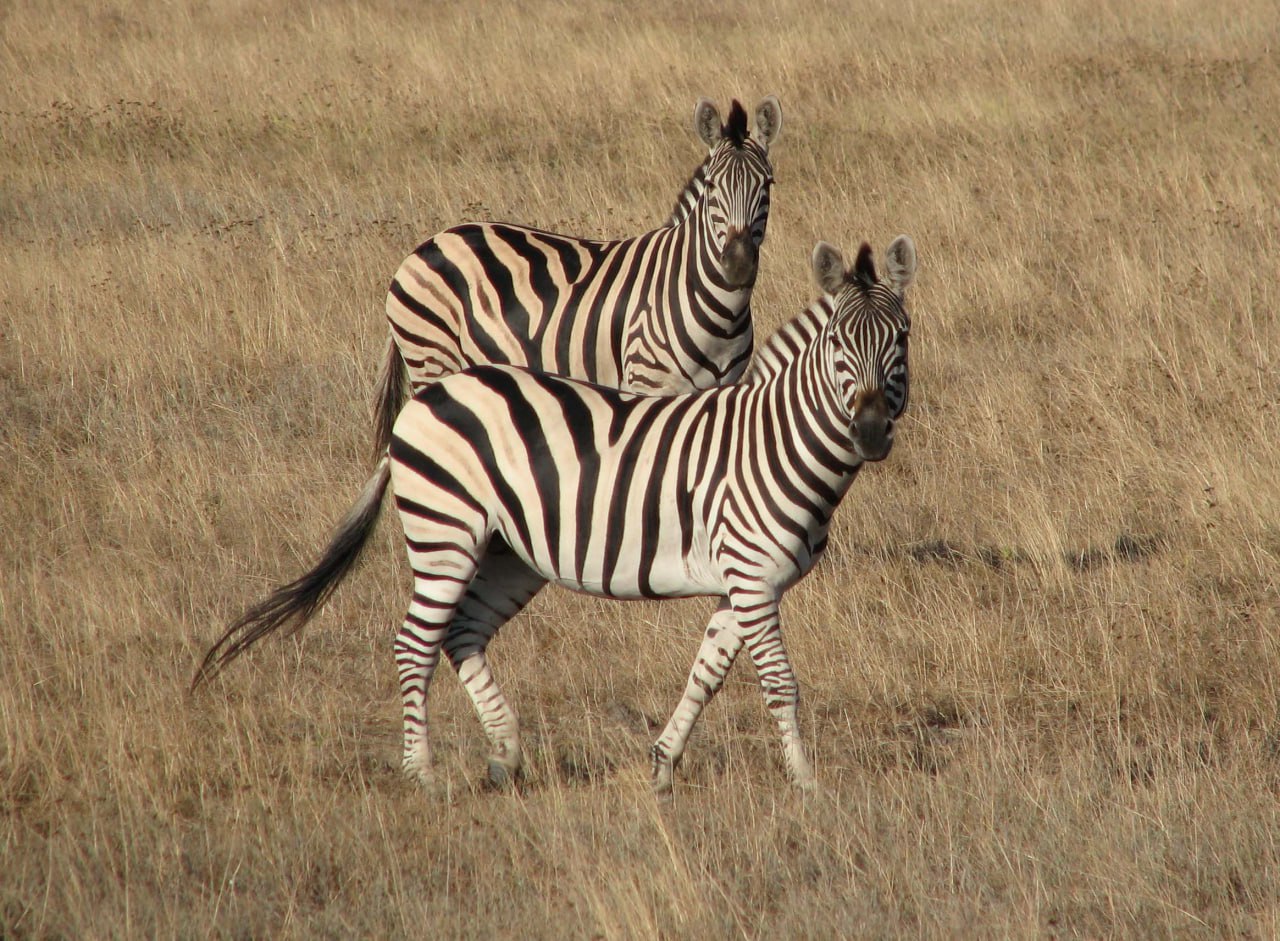
Photo: Viktor Shapoval's archive.
Similar reintroduction experiments are not always successful. Many such attempts at breeding, in particular the aboriginal saiga antelope, have been unsuccessful or disproportionate in scale.
"The collection, as such, has a value as a whole. It cannot be broken down simply to the value of individual animals. Undoubtedly, it is a national treasure and a world heritage. If there is a desire, resources, and opportunities, it is theoretically possible to restore something, although it is a very difficult task," Shapoval explains. "It is not resolved during the year, there are many nuances, and one must understand that the loss of this collection is a disaster in any case. It will be possible to restore something similar, but it will not be the same."
The institution has a power reserve
The situation when the occupiers would decide to appropriate Askania was foreseen in advance, so the reserve accumulated enough resources so that the animals would survive the time when the occupiers would try to manage the reserve. The reserve team had to prepare for the worst course of events. Reserves of grain, juicy and coarse fodder are accumulated in the reserve warehouses.
"This is a Ukrainian collection kept in Ukraine! There is something to feed today and tomorrow. Sooner or later, the establishment of actual control should have happened, and one can understand the logic of the occupiers' actions. Obviously, they feel the situation will soon change, but not in their favor," Shapoval continues. "Such appropriation of Askania-Nova under the control of the occupation administration may well mean intentions and preparations for the evacuation of the zoological collection."
"Next winter we will meet in the de-occupied Askania-Nova"
While the reserve is waiting for de-occupation, Shapoval and the UNCG have already accumulated resources for the reserve's future restoration.
"What exactly will have to be restored cannot be said at this stage. Everything depends on how the front will move, whether military operations will take place directly on the reserve's territory, and what will eventually happen after the de-occupation of the region," Shapoval told Rubryka. "It is definitely necessary to prepare for recovery. It must be clearly understood that the losses can be catastrophic."
Now we have to accumulate a fund because many issues will require an urgent solution: fuel, maintenance equipment, part of which the occupiers have already seized, and repair of the premises. After all, it is unclear what form they will be in.
"I am convinced that the de-occupation of Askania will take place soon and prepare for it necessary," Shapoval concludes.
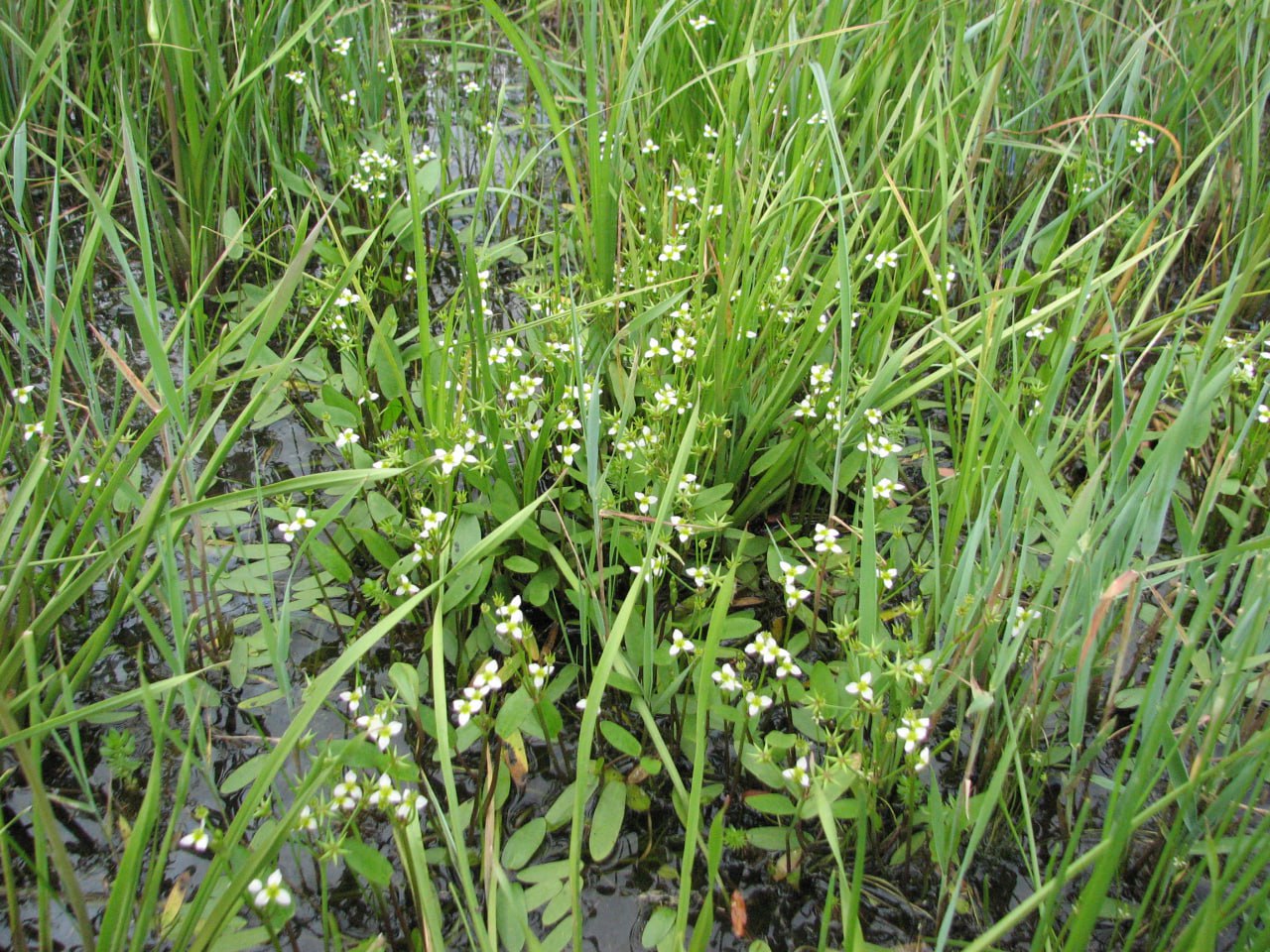
Photo: Viktor Shapoval's archive.
How to help the reserve?
Anyone can help the reserve accumulate resources for recovery by making a contribution to the account of the NGO Ukrainian Nature Conservation Group, which during the last year, actively helped the state institution in the purchase of fodder, fuel, and equipment, as well as supported the employees of the institution under occupation and those who were forcibly displaced.
The necessary details to transfer funds to the UNCG account are available at the link. Click the Protection of the Steppes button, and your funds will buy fodder for animals in the reserve. Accounts for transfers in foreign currency are available here.
"Many people are actually waiting for the liberation of the reserve. Let's see how everything will develop. We still have a power reserve, but the sooner Askania is liberated, the better. The situation here completely depends on the Armed Forces of Ukraine," Shapoval concludes.

Protect wildlife in Ukraine: simple solutions for those who care

Подкаст Рішуча Миколаївщина: як волонтери допомогли зберегти один з найбільших зоопарків України

Mourning animals: how Lutsk Zoo helps people and animals that had to leave their homes

Nature parks and reserves in russia-occupied territories: how Askania-Nova in Kherson region survives war

150 new animals and sedatives for elephants: how Kyiv zoo experiencing full-scale war

Dead dolphins, non-returning pelicans and lack of fish: how the war affects Tuzly estuaries
Newsletter
Digest of the most interesting news: just about the main thing





